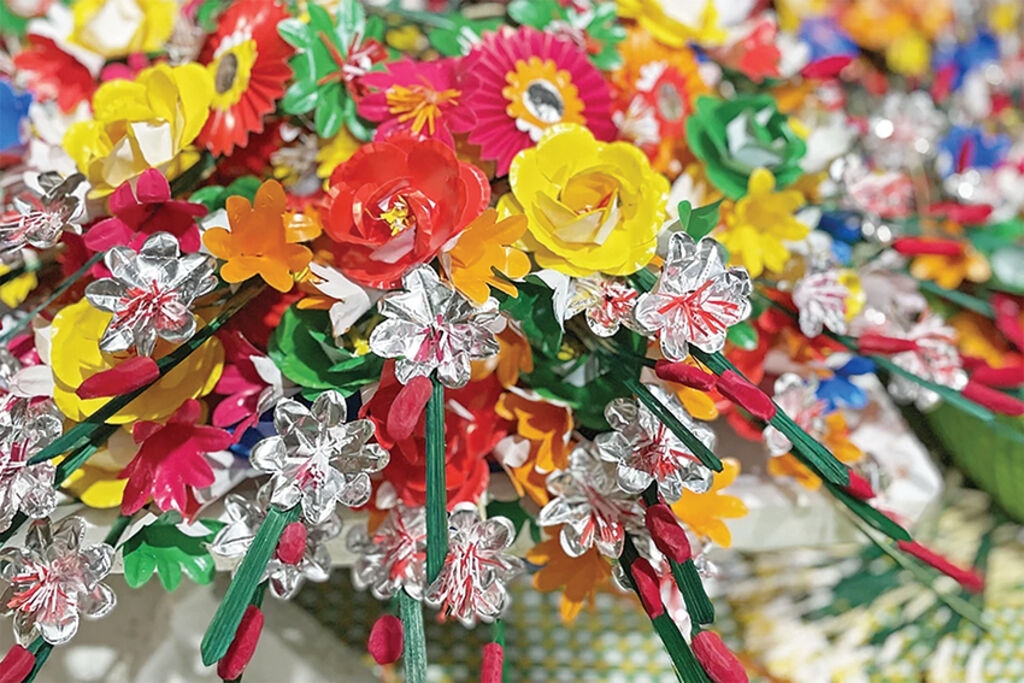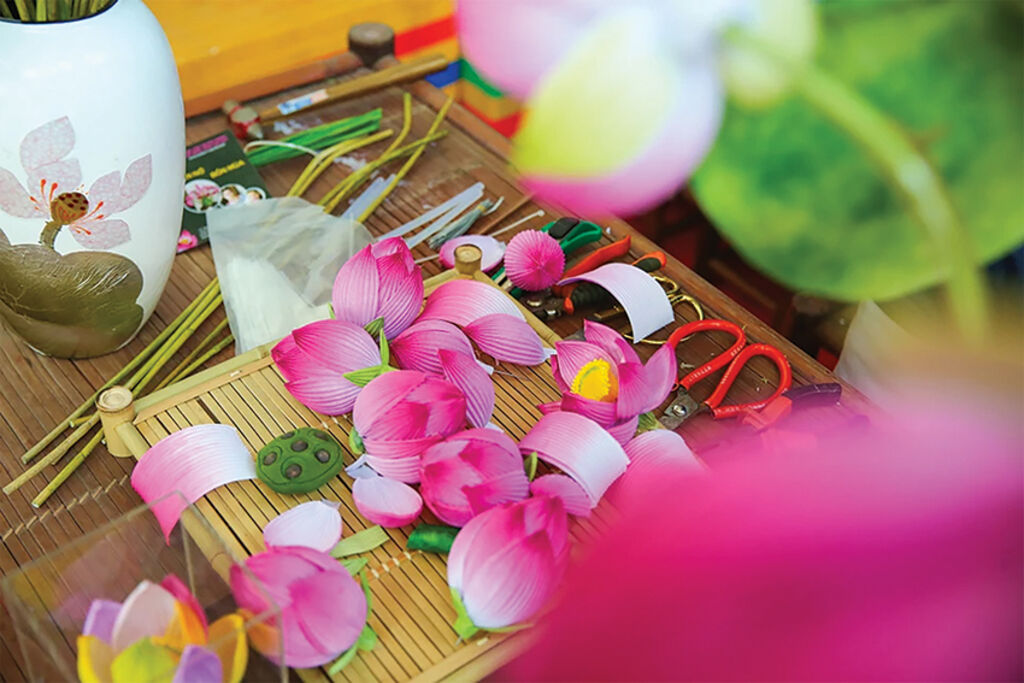 |
| Thanh Tien paper flowers__Photo: diemthamquan.net |
Every year when the spring arrives, the old imperial Hue city in Thua Thien Hue province is awash with vibrant colors of handmade beautiful paper flowers sold by strolling vendors.
These flowers all come from Thanh Tien, a small village lying downstream on the southern bank of the Huong river in Phu Mau commune, Hue city. The village, known previously as Tan Lan and now as Thanh Vinh, is well-known for handcrafted lotus and other paper flowers.
 |
| Materials prepared for making paper lotuses__Photo: Vietnam+/VNA |
Thanh Tien paper flower craft was listed among traditional crafts during the period between the 16th and 19th centuries in “Dai Nam Nhat Thong Chi” (the Geography of Unified Great Vietnam), a book written during King Tu Duc’s rule (1847-83).
It is believed that the craft has a history of over 300 years. Legend has it that after unifying the country, King Gia Long (1802-20) issued a royal proclamation requesting each locality to offer a species of precious flowers. A mandarin from Thanh Tien village offered to the King a product of his hometown.
Each Thanh Tien flower branch is always composed of eight flowers of different colors with a red bud and a green rice leaf-shaped leaf. The three central flowers are the symbols of the Emperor-Teacher-Father or Loyalty-Filiality-Righteousness of which the largest one, which represents the King - the Son of the Heaven, is usually yellow or red. Meanwhile, the remaining five flowers manifest five noble virtues, i.e., kindness-decorum-uprightness-wisdom-faithfulness. As the meaning of the flower is closely tied to Confucian theory, which was appreciated in the country at that time, the King encouraged Thanh Tien villagers to promote their craft.
 |
| Late artisan Than Van Huy__Photo: VNA |
In the past, Thanh Tien paper flowers were used mainly for religious worship. Nowadays, they are used not only as offerings to ancestors and deities but also as decorations at homes, coffee shops, restaurants and hotels, especially on the occasion of Tet (Lunar New Year) festivals.
During the 12th lunar month, Thanh Tien villagers put aside their farm work and become flower-making artisans. However, the preparation of materials to produce paper flowers for a Tet festival often begins before the rainy season in October. The craftsman starts with electing bamboo stalks, a job which must be carried out very carefully. Qualified bamboo stalks will be chopped down and split into sticks and then dried. Dried sticks, which will later be used to make pedicles and stems, are then rounded, and dyed.
 |
| Thanh Tien handmade paper lotuses__Photo: VNA |
The craftsman then proceeds with carving the petals. He uses natural dyes derived from tree sap and leaves, e.g., gardenia fruits for yellow and jute seeds for purple. With an iron chisel, he skillfully carves a stack of colored papers along the intricate curves of a wooden flower petal frame to form the petal shapes. After that, he makes pistil from glassine. The paper plant begins to take shape beneath his skilled hands. The blooms manifest in a variety of forms such as lotus, apricot blossoms, chrysanthemums, orchids, roses, morning glory, etc.
According to Thanh Tien villagers, lotus is the flower that is most difficult to make as it requires sophistication, skillfulness and dedication. It is late artisan Than Van Huy who has made great contributions to successfully revive the techniques of making paper lotus flowers. Creating petal veins, dying and assembling individual petals into a flower are the most challenging steps, said experienced flower makers.- (VLLF)









